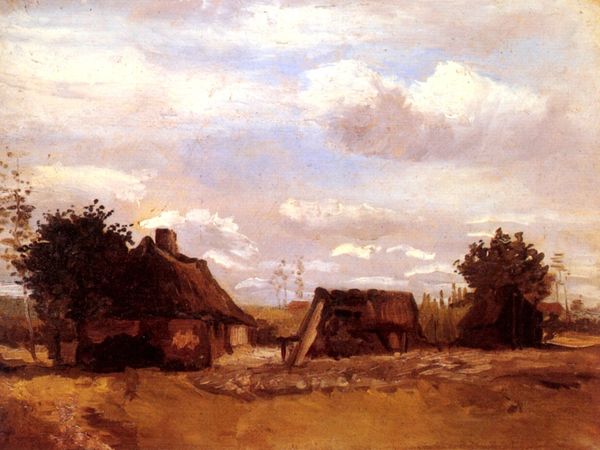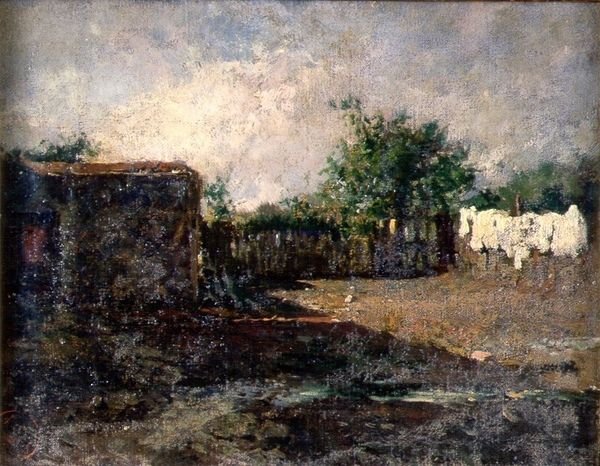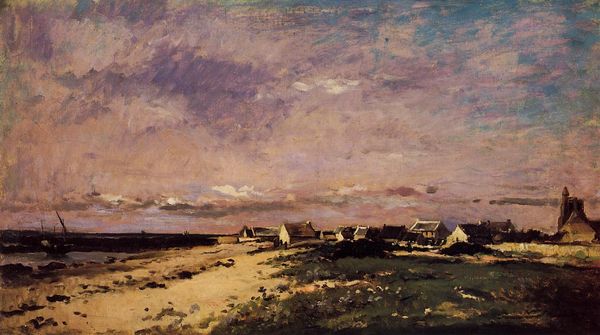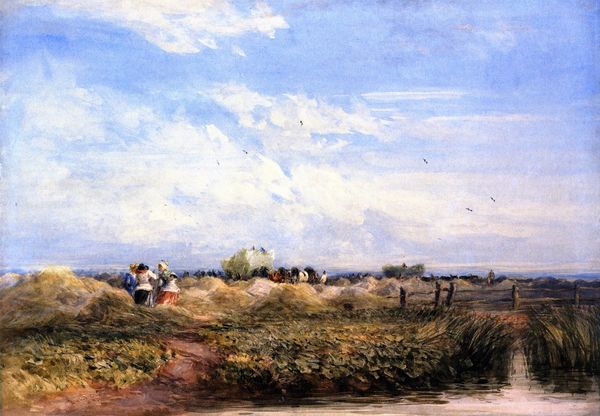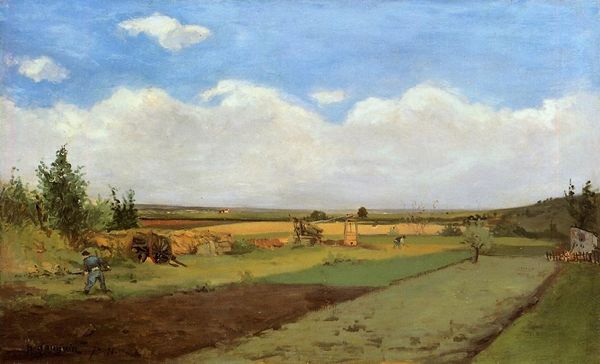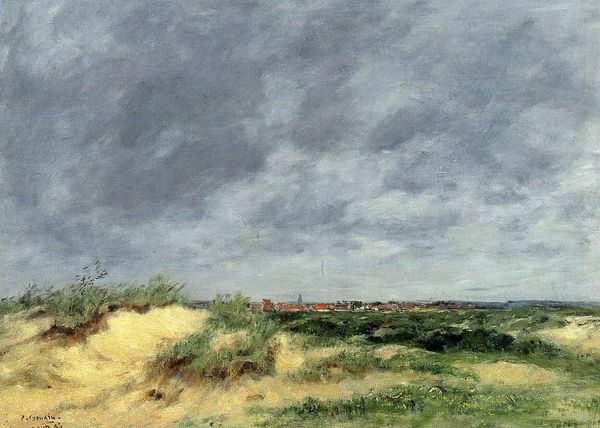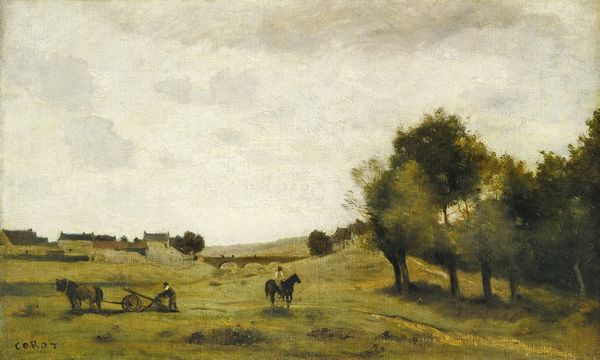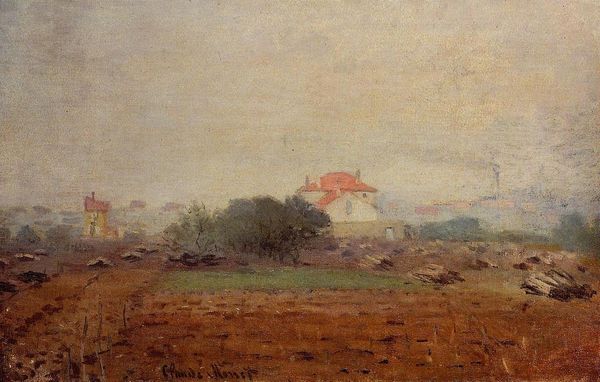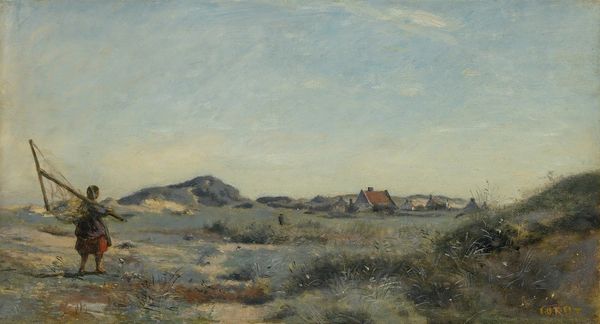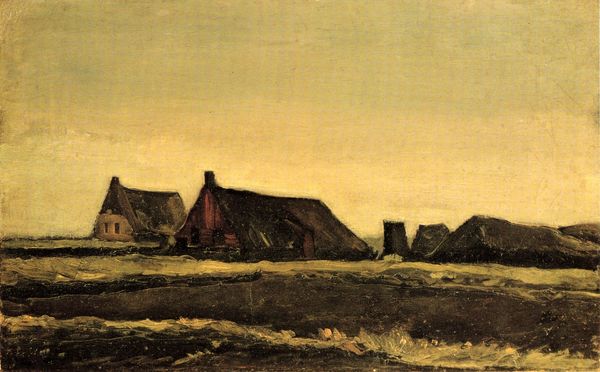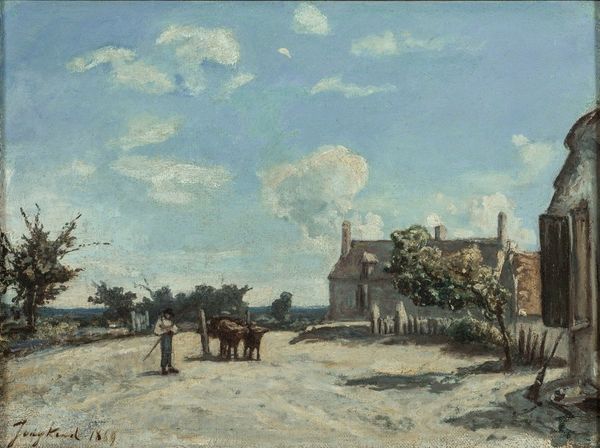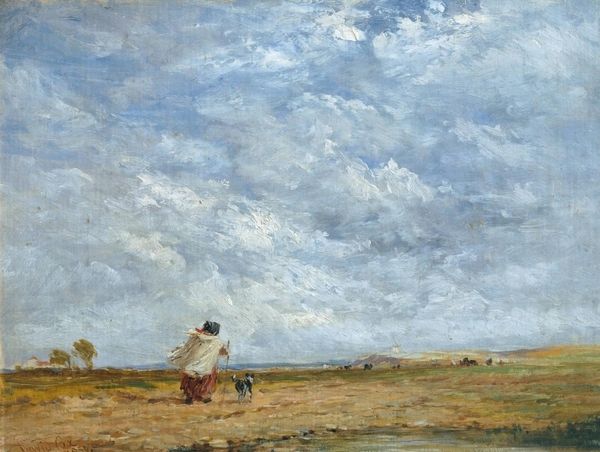
Copyright: Public Domain: Artvee
Editor: So, here we have Tina Blau's "Landschaft in der Puszta Szolnok," made with oil paint sometime between 1874 and 1910. It’s a landscape, but there are also figures in it, giving it almost a genre painting feel. What strikes me is how desolate, but somehow also lively, the scene is. How do you interpret this work? Curator: What I see here is a painting deeply engaged in the social and political climate of its time. The Hungarian Puszta, while seemingly a simple landscape, carried heavy symbolic weight. Do you get a sense of the history of this region when you see it? Editor: Well, I wouldn't immediately think "political," to be honest. But tell me more! Curator: Think about it: this area, traditionally agricultural, was undergoing rapid transformation due to industrialization. Blau, by painting en plein air, directly engages with this shifting landscape, making a statement about the value of rural life versus encroaching modernity. The loose brushwork, characteristic of Impressionism, doesn't just depict scenery; it portrays a fleeting moment in Hungarian history. Editor: That's a really different perspective than what I was thinking. It's almost like she's making the political personal with those quick strokes. Did the way it was displayed influence its meaning too? Curator: Absolutely! Knowing that this painting was likely exhibited in established salons gives it even more nuance. Blau, as a woman artist, was navigating a male-dominated art world. Showing a scene like this – the everyday life of Hungarian peasants - within that established system? It elevates those subjects while also questioning the artistic hierarchy. It challenges the norms of what art *should* be. Editor: Wow, that context makes this painting way more powerful than I initially realized. I'll never look at another landscape the same way! Curator: Indeed. It reminds us that art doesn't exist in a vacuum; it's always speaking to the social, cultural, and political realities of its time.
Comments
No comments
Be the first to comment and join the conversation on the ultimate creative platform.
